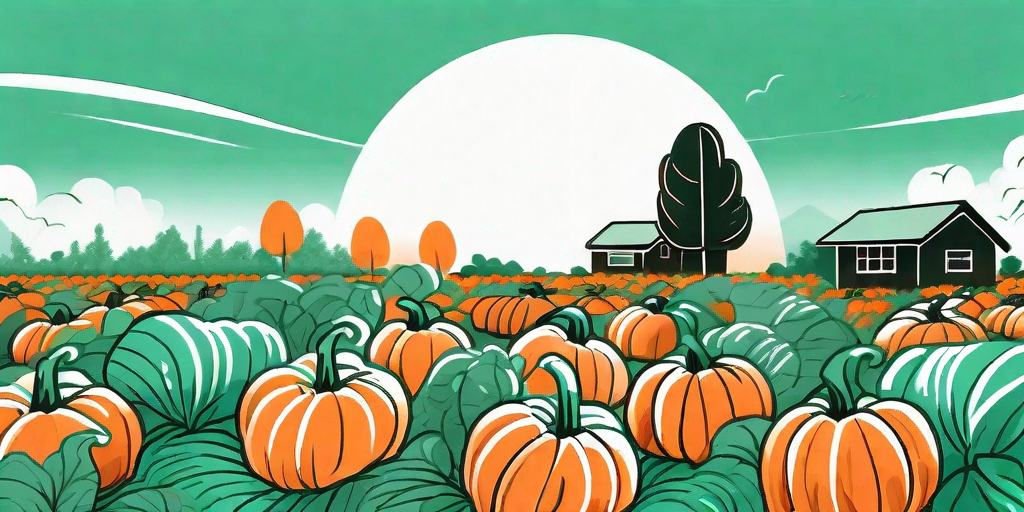
Welcome, fellow green thumbs and pumpkin enthusiasts! If you've ever dreamed of growing your own pumpkin patch, but have been limited by space or soil quality, we've got a solution that's sure to carve a smile on your face. Growing pumpkins in containers is not only possible, but it's also a fun and rewarding endeavor. So, let's dive into the world of container gardening and turn that pumpkin dream into a reality.
Why Grow Pumpkins in Containers?
Before we get our hands dirty, let's address the pumpkin in the room: why grow pumpkins in containers? Well, there are a few good reasons. First, it's a great solution for those who lack ample garden space. Second, it allows you to control the soil quality and watering conditions, which can lead to healthier, happier pumpkins. And finally, it's just plain fun. There's something incredibly satisfying about nurturing a pumpkin from seed to harvest, especially when you can do it on your patio or balcony.
Plus, let's not forget the bragging rights. When you serve up a homemade pumpkin pie made from your own homegrown pumpkin, you'll be the talk of the town (or at least your dinner table).
Choosing the Right Container
Now that we've established why container gardening is a great option, let's talk about the container itself. Not all containers are created equal, and choosing the right one is crucial for your pumpkin's success.
Firstly, size matters. Pumpkins are not exactly known for their modesty when it comes to space. A container that's at least 20 inches in diameter and depth is a good starting point. This will give your pumpkin plant plenty of room to grow and ensure it has enough soil to draw nutrients from.
Secondly, material matters. Plastic containers are lightweight and retain moisture well, but they can become quite hot in the sun. Ceramic pots are heavier and cooler, but they can be more prone to cracking. Metal containers can be used, but they can also heat up and may not be ideal for hot climates. Wood containers can be a good option as they are durable and provide good insulation.
Lastly, don't forget about drainage. Your container should have several holes at the bottom to allow excess water to escape. Pumpkins don't like wet feet!
Choosing and Planting Your Pumpkin Seeds
Once you've got your container sorted, it's time to choose your pumpkin seeds. There are many varieties of pumpkins, from the classic orange Jack-o'-Lanterns to white Lumina pumpkins, miniature pumpkins, and even giant pumpkins. Choose a variety that suits your taste and space constraints.
When it comes to planting, patience is key. Wait until the danger of frost has passed and the soil temperature is consistently above 70°F (21°C). Plant 2-3 seeds about an inch deep in the soil and water well. Once the seedlings have sprouted, choose the strongest one and remove the others. This will ensure your pumpkin plant has all the resources it needs to thrive.
Caring for Your Pumpkin Plant
Now that your pumpkin plant is growing, it's time to switch to caretaker mode. Regular watering is crucial, especially in the heat of summer. Aim for deep, infrequent watering rather than shallow, frequent watering. This encourages the roots to grow deep and strong.
Feeding your pumpkin plant is also important. A balanced fertilizer applied every two weeks can do wonders for your plant's growth and fruit production. Just be careful not to overdo it, as too much fertilizer can lead to lush foliage but few pumpkins.
Finally, keep an eye out for pests and diseases. Aphids, squash bugs, and powdery mildew can all pose a threat to your pumpkin plant. Regular inspections and prompt action can keep these issues at bay.
Harvesting and Enjoying Your Pumpkins
After months of nurturing, it's finally time to harvest your pumpkins. The best indicator of ripeness is the color and hardness of the skin. Once your pumpkin has reached its expected color and the skin is hard, it's ready to be harvested. Use a sharp knife to cut the stem, leaving a few inches attached to the pumpkin. This will help prevent rot and extend the life of your pumpkin.
But the fun doesn't stop at harvest. Now you get to enjoy the fruits of your labor. Carve a spooky Jack-o'-Lantern, whip up a delicious pumpkin pie, or roast the seeds for a tasty snack. The possibilities are endless!
Frequently Asked Questions
Can I grow pumpkins in small containers?
While it's possible to grow pumpkins in small containers, it's not ideal. Pumpkins need a lot of space to grow, both above and below the soil. A small container may limit their growth and result in smaller, less healthy pumpkins.
Can I grow pumpkins indoors?
Yes, you can grow pumpkins indoors, but they will still need plenty of sunlight and space. A sunny, south-facing window and a large container are a must.
How long does it take to grow a pumpkin?
From seed to harvest, it typically takes between 90-120 days to grow a pumpkin. This can vary depending on the variety and growing conditions.
Conclusion
There you have it, folks! Growing pumpkins in containers is not only possible, but it's also a fun and rewarding way to enjoy your own homegrown pumpkin patch. So, why not give it a try? With a bit of care and patience, you'll be harvesting happiness in no time!











